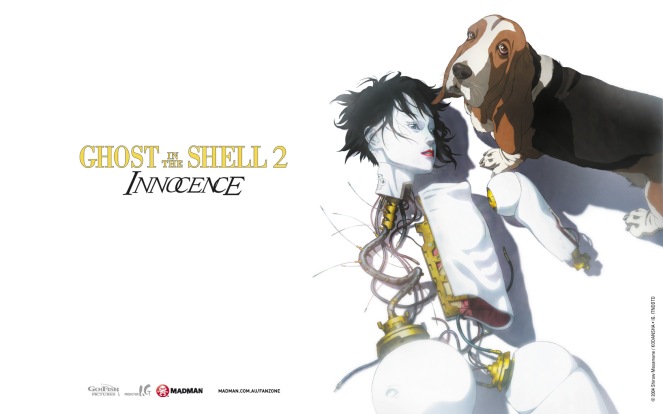 Everywhere we look we can see the future coming. Prosthetic limbs, electronic cigarettes and restaurants staffed entirely by robots are only a few examples of technology’s constant presence in our lives. Our phones are super-computers and we take in more information every day than we ever did before. But how long before we merge with technology? How long before brains are measured in RAM and terabytes? These are questions Ghost in the Shell 2: Innocence asks but, importantly, never answers.
Everywhere we look we can see the future coming. Prosthetic limbs, electronic cigarettes and restaurants staffed entirely by robots are only a few examples of technology’s constant presence in our lives. Our phones are super-computers and we take in more information every day than we ever did before. But how long before we merge with technology? How long before brains are measured in RAM and terabytes? These are questions Ghost in the Shell 2: Innocence asks but, importantly, never answers.
Following the events of Ghost in the Shell Batou of Section 9 teams up with Togusa to investigate sex-robots that are murdering their clients. Just as the Puppet Master manipulated events and people in Ghost in the Shell another hacker of a similar calibre controls people and events in order to kill a Yakuza boss. Without the Major, Batou must rely on the unenhanced Togusa for help.
Batou is a large man mostly made up of cybernetic prosthetics. His eyes have been replaced by thick spectacle-like lenses. Togusa, though he has a cybernetically enhanced brain, is relatively augment free and is one of the more normal looking characters. Aside from his hideous mullet of course. This dichotomy is key to Innocence. Batou sand Togusa are men greatly at odds with one another. Where Section 9 gave Batou his body they also own him. Togusa does not have the capabilities afforded by robotic enhancements but it does free him to have a life and family.
The animation of Innocence is something wonderful to behold. From the rain soaked streets of a neo-noir Tokyo to an enormous mansion lit by the light of the dying sun no detail is glossed over. From the often visceral fight scenes to the cerebral hacking sequences Innocence pulls no punches when putting its high concept subject matter onscreen. An enormous CGI parade that took a year to animate wordlessly highlights the films often overlooked religious and philosophical influences. When the sex-robots split open revealing intricate wiring and circuitry it is one of the goriest moments in a film despite the lack of traditional gore.

Over and over again director Mamoru Oshii puts in multiple metaphors with dolls becoming the most common. A metaphor for the robots of the film the dolls are a symbol of how plentiful technology has made life easier but also emptier. That is the easiest interpretation anyway but one cannot help but feel that peeling back only a single layer reveals a tiny percentage of a greater whole. The final few shots of the film cut between Batou, his cloned dog, Togusa and his unenhanced daughter. It asks the question of who is more human in this future? The immortal cyborg or the man who refuses to move forward? Is the cloned dog a commentary on technology’s effect on the environment? Are children the purest form of humanity left in this neon soaked future? Before any of these questions are answered the film cuts to black.
Innocence is a meditative film. The camera lingers on small details. Falling rain. A ticking clock. A dogs downturned eyes. It is as if by looking at the smaller details we understand the bigger picture. Innocence opens with a quote from a book called The Future Eve and it’s a statement that is hard to stop thinking about long after the credits roll…
“If our gods and hopes are nothing but scientific phenomena, then it must be said that our love is scientific as well.”
Andrew Carroll.
